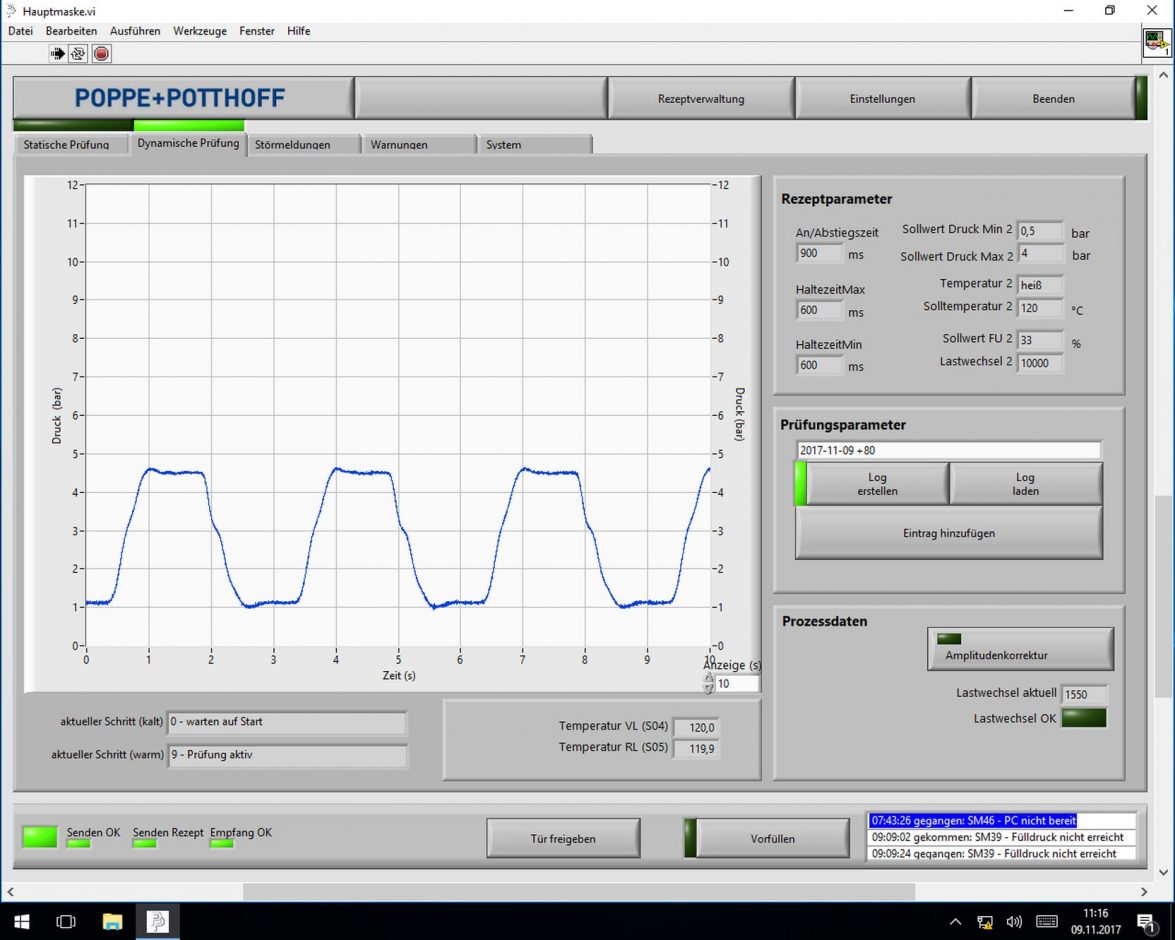Mobility requires reliable cooling and heating systems. These help man and machine – whether electric or internal combustion engine – to adapt to varying environmental conditions on land, at sea and in the air. Climate systems and all their components need to endure high load changes in the long term. Instead of trying the load-bearing capacity in real operation, manufacturers can now use the pressure cycling test rig from Poppe + Potthoff Maschinenbau to test their components flexibly, economically and in fast motion at an early stage of development.
Test at -40 to +140 degrees Celsius
For this purpose, the component, such as an additional heater for an electric car, is inserted into the test chamber. The test medium used is a water-glycol mixture or pure glycol (e. g. Glysantin G40, G44, G48). Tests can be carried out in a temperature range from -40 to +20 degrees Celsius for the cooling circuit and from +20 to +140 degrees Celsius for the heating circuit. By means of pressure, a specially developed closed test medium circuit prevents the generation of alcoholic vapors (risk of explosion). An additional climate chamber can optionally be used to generate the environmental simulation.
The flow rate of the test medium can vary from 3 to 30 l/min at a pressure of 0.2 to 10 bar (max. 12 bar). The load changes are freely programmable with sinusoidal or trapezoidal rise in a test frequency of 0.2 to 1 Hz. With the testing unit, complete systems as well as individual components made of various plastics, metals and sealants can be tested. With the help of realistic simulation, the weak points in the bonded material are precisely determined – for example, in the area of a welding seam – and can be optimized early on during the development process.
Optimization of climate components and systems
Measurement data acquisition and visualization are carried out with LabVIEW applications from National Instruments, as with all PPM systems. The open software structure enables additional sensors and measurement data to be integrated into the test. In this way, numerous client-specific relevant parameters can be mapped. All test sequences and data are automatically stored on the system and can be exported to the network for evaluation. The system can be adapted to customer requirements, remote maintenance and on-site service complete the service package.






